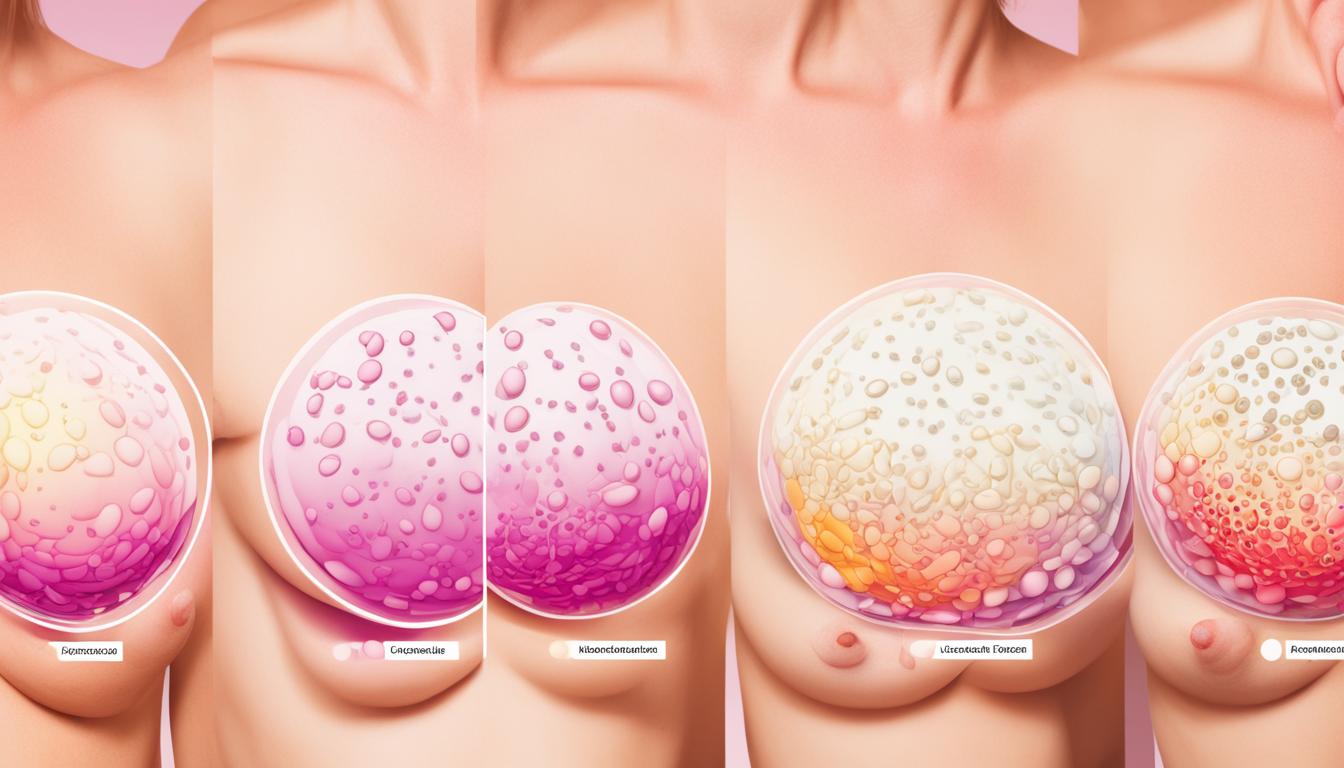When I was young, seeing my body change was both thrilling and scary. The growth of my breasts marked a big step into womanhood. However, I didn’t fully grasp what was happening. Now, I see how important estrogen is for breast growth in women’s lives. This hormone not only influences the start of breast development before birth but also shapes changes during puberty, pregnancy, and menopause. It’s truly amazing how this hormone guides the growth and function of our breasts.
The process of breast development is key for women to reproduce. It occurs in several stages during a woman’s life. For instance, before birth, during puberty, and in the childbearing years. You also notice changes in your breasts during your menstrual cycle and when menopause hits. Early on, while still a fetus, a baby girl’s chest area thickens, forming the basis for breasts. By birth, the nipples and the start of a milk-duct system are already there. As teenage years approach, breast development visibly begins with the help of estrogen. This hormone adds fat to the breasts and spurs growth in the duct system. With the start of ovulation and periods, the breasts start maturing further. Glands that produce milk form at the ducts’ ends.
Key Takeaways
- Estrogen plays a crucial role in the development and growth of breast tissue throughout a woman’s life.
- Breast development occurs in stages, starting before birth and continuing through puberty and the childbearing years.
- Estrogen stimulates the growth of milk ducts and controls the development of glandular tissue in the breasts.
- Hormonal changes during the menstrual cycle, pregnancy, and menopause also influence breast changes.
- Understanding the relationship between estrogen and breast biology is important for women’s health and disease prevention.
Understanding Breast Development
Breast development starts early and continues throughout a women’s life. It begins in the womb with the mammary gland anatomy taking shape. During puberty and adolescence, the breasts grow and change. This is because of a mix of hormones and body changes.
Stages of Breast Growth
Girls usually start seeing their breasts develop in their teens. This happens as the ovaries produce more estrogen. The breasts start adding fat and the duct system grows too.
After a girl starts her period, her breasts continue to grow. Special glands form at the end of the milk ducts. This process keeps going through her childbearing years.
Anatomy of the Mammary Gland
The mammary gland anatomy is quite complex. It includes lobes, milk ducts, and secretory glands. These parts make and store milk. They change a lot due to hormones during puberty and adolescence, periods, and pregnancy.
As a woman nears menopause, her breasts undergo one last major change. The milk ducts shrink, and the breasts lose firmness. This happens due to lower estrogen. It’s why older women’s breasts may look ‘saggy’.
The Role of Estrogen in Breast Development
Estrogen is key for breast tissue growth. It boosts the growth of milk ducts in the breasts. This happens because higher estrogen levels make a woman ovulate around halfway through her menstrual cycle. After that, progesterone steps in during the second half of the cycle. It helps the milk glands form.
These two hormones cause the changes women see in their breasts before their period. This might include swelling, tenderness, or texture changes. Estrogen mainly helps ducts grow, and progesterone helps with glandular bud growth. But many other hormones, like follicle-stimulating hormone, play important roles in breast development and later during milk production.
Estrogen Receptors in Breast Tissue
Estrogen also works through estrogen receptors in breast tissue. These receptors are in the cells of milk ducts and lobules. They’re also in connective tissue around the breasts. When estrogen binds to these receptors, it starts a chain reaction. This leads to breast cell growth and specialization.
The partnership between estrogen and its receptors is crucial for breast growth. Knowing about how hormones control the breast is key. It helps understand estrogen’s role in breast development and its link to some breast cancer types.
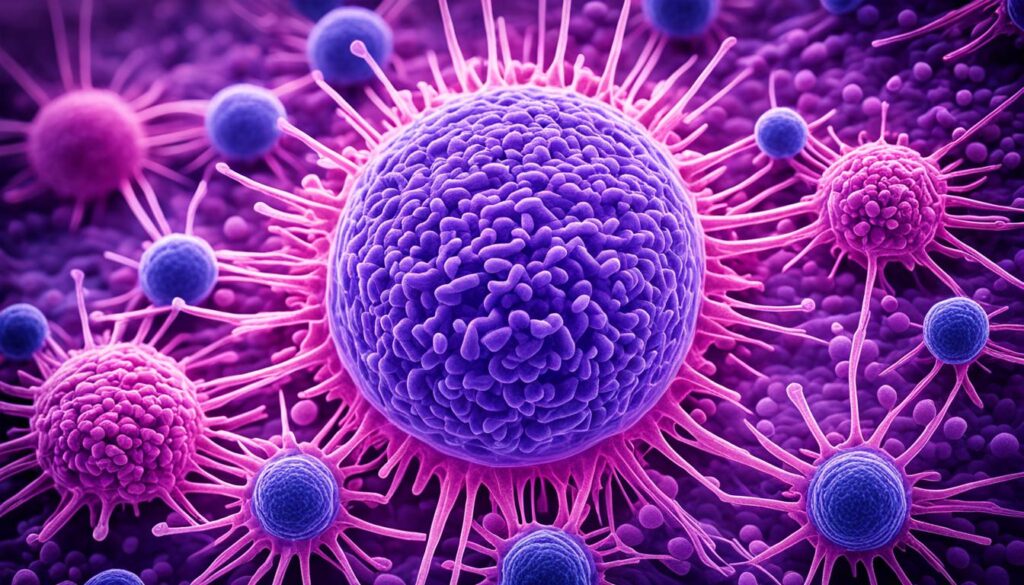
Breast Changes During Puberty
As a girl gets closer to her puberty and adolescence, her first signs of breast development show. The ovaries start to release estrogen. This makes fat in the connective tissue gather, making the breasts get bigger.
The duct system in the breasts also begins to grow. This growth happens around the same time as when girls see their first pubic and armpit hair.
Hormonal Changes in Puberty
When ovulation and menstruation start, breast maturity sets in. Secretory glands form at the milk ducts’ endings. The breasts and the duct system keep growing. Many glands and lobules also develop.
The pace of breast growth varies, showing different hormonal changes in puberty. These hormones push the growth forward.
What role does estrogen play in breast development?
Estrogen is essential for breast growth. It makes the milk ducts in the breasts grow. It also causes ovulation about halfway through the menstrual cycle.
This hormone makes sure the ducts grow, while another hormone, progesterone, helps with the glandular buds. Other hormones like follicle-stimulating hormone, luteinizing hormone, and others are also important for breast development and milk production.
Estrogen is a key player in breast development. It affects the breasts from early fetal stages to menopause. This hormone is crucial for the breasts to grow and function well during a woman’s adult life.
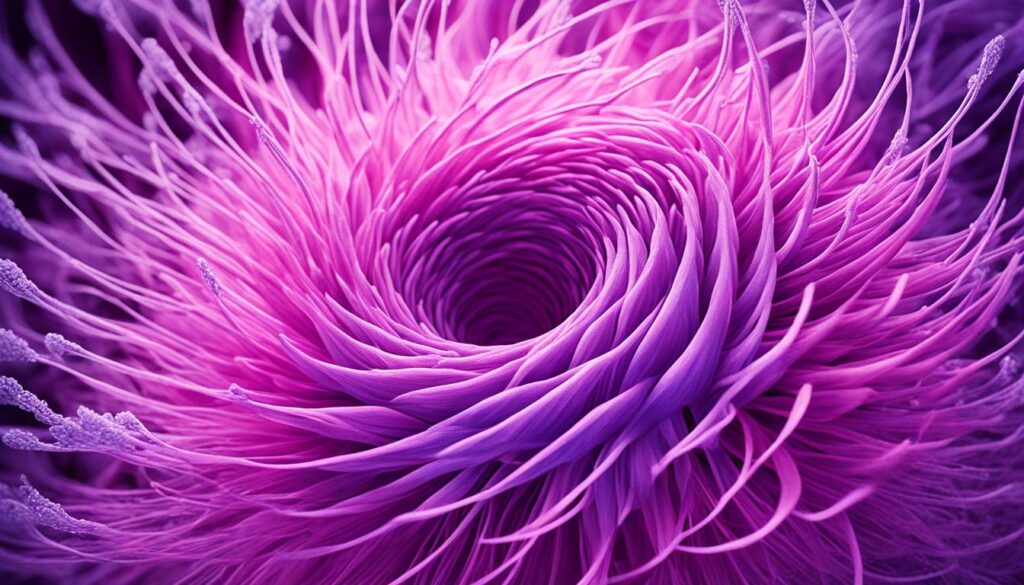
Cyclical Breast Changes During Menstrual Cycle
A woman’s body changes during her menstrual cycle due to hormones. The hormone estrogen causes these changes in the first half of the cycle. It makes milk ducts in the breasts grow.
This happens during the first part of the cycle. Estrogen levels are high at this time. Ovulation, when an egg is released, also occurs here.
In the second half, progesterone becomes more important. It makes milk glands form. These changes can make breasts feel swollen or tender. The texture might change too.
Before the period starts, breasts might feel lumpy because the glands are growing. This is to prepare for a possible pregnancy.
Learning about these cyclical breast changes is good for women. It helps them know why their breasts may feel different at times. With this knowledge, they can deal with any discomfort and keep their breasts healthy.
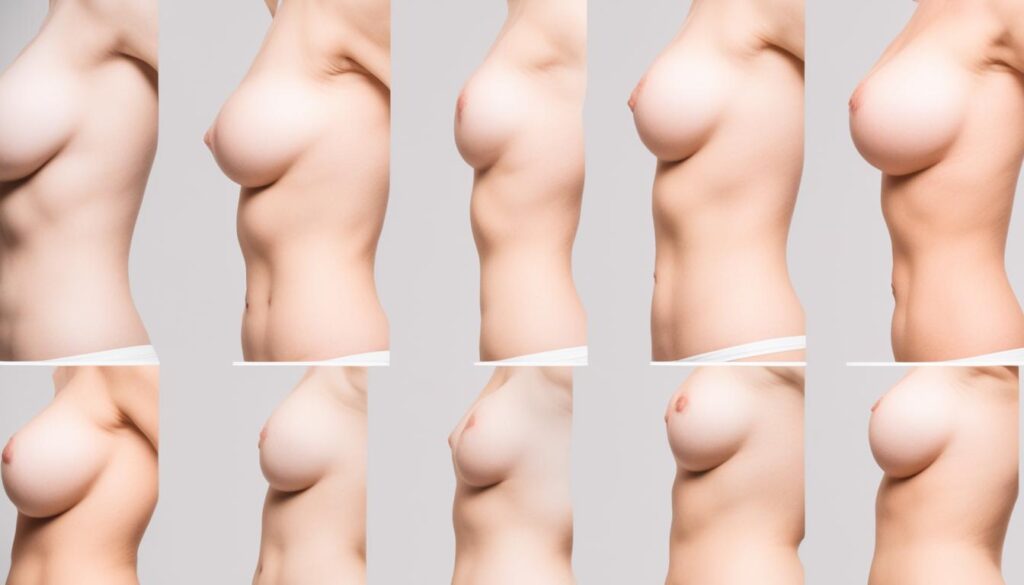
Breast Development During Pregnancy
Healthcare providers say the breasts fully develop after birth when milk is made. Early pregnancy signs include breast changes. These happen because of progesterone, a hormone. First, the areolas get larger, then the breasts swell quickly.
During pregnancy, most women feel breast soreness and nipple tingling. This comes from the milk duct system growing and more lobules forming. By the fifth or sixth month, breasts can start making milk.
Hormonal Regulation of Milk Production
Estrogen makes the ducts grow, and progesterone helps glandular buds grow. Other hormones such as FSH, LH, prolactin, oxytocin, and human placental lactogen are important too. They all have roles in making milk.
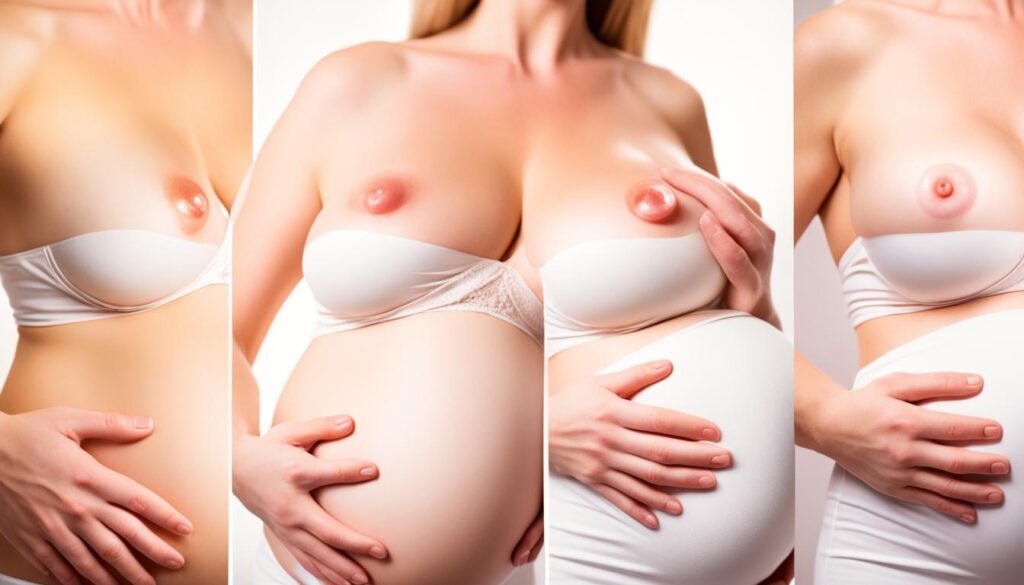
Menopause and Breast Changes
As I get older into my late 40s and early 50s, I see some changes in my breasts. I’m going through perimenopause, which is the time before menopause. Now, my body’s estrogen and progesterone levels are changing. My estrogen levels have dropped a lot. This leads to many menopause symptoms.
My breasts’ connective tissue loses moisture and flexibility without estrogen. Before, this tissue was ready to produce milk. Now, it starts to shrink and sag, making my breasts look less youthful. This is a common part of menopause changes. Even if I use hormone therapy, I might still have breast soreness and swelling. But, this won’t stop the sagging that started before my menopause.
These changes are a natural part of getting older, but it’s hard to accept. I’m learning to be patient and nice to myself as my body goes through these changes.
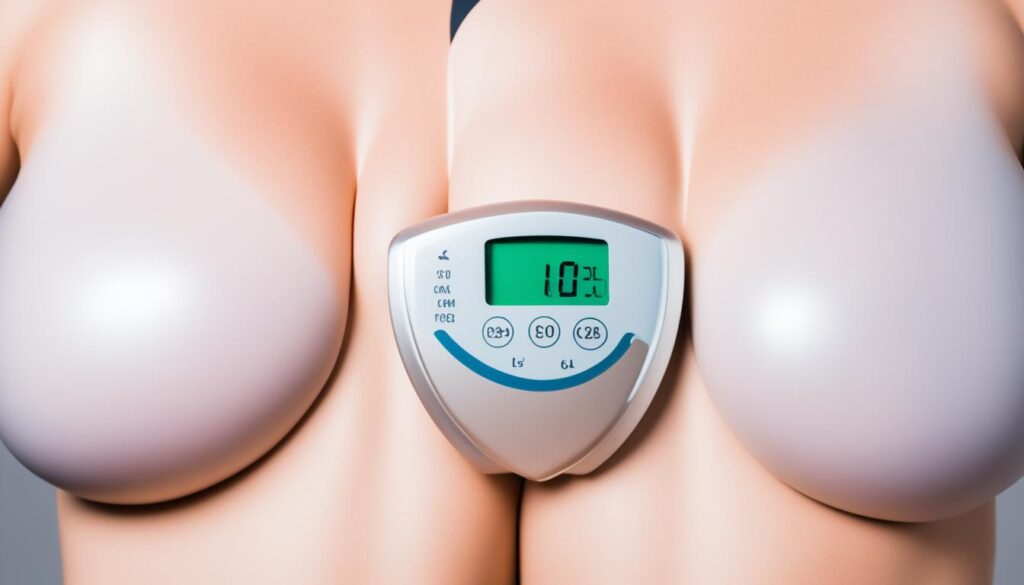
Estrogen, Breast Cancer, and Cancer Risk
Estrogen is really important in how some breast cancer types grow. For instance, tumors with estrogen receptors (ER+) need estrogen to grow and stay alive. On the flip side, triple-negative breast cancer doesn’t react to estrogen. It tends to spread more and poses a bigger threat.
Long-term exposure to estrogen, usually from starting periods early, ending periods late, or taking menopausal hormones, can up the risk of breast cancer. Knowing how estrogen influences different breast cancer types is key. It helps in making treatments and prevention plans more effective.
Breast Cancer Subtypes and Estrogen
Most breast cancers rely on estrogen to grow (ER+ types). But those that don’t respond to estrogen, like triple-negative breast cancer, are harder to treat. They also carry a worse outlook. It’s vital to grasp how estrogen affects the spectrum of breast cancer types.
| Breast Cancer Subtype | Relationship with Estrogen |
|---|---|
| Estrogen Receptor-Positive (ER+) | Dependent on estrogen signaling for growth and survival |
| Triple-Negative Breast Cancer | Lacks estrogen receptors, more aggressive, poorer prognosis |
Understanding estrogen’s impact on various breast cancer subtypes is critical. It guides the development of treatments and prevention plans that work. By studying these connections, we aim to enhance outcomes and ease the burden of breast cancer.
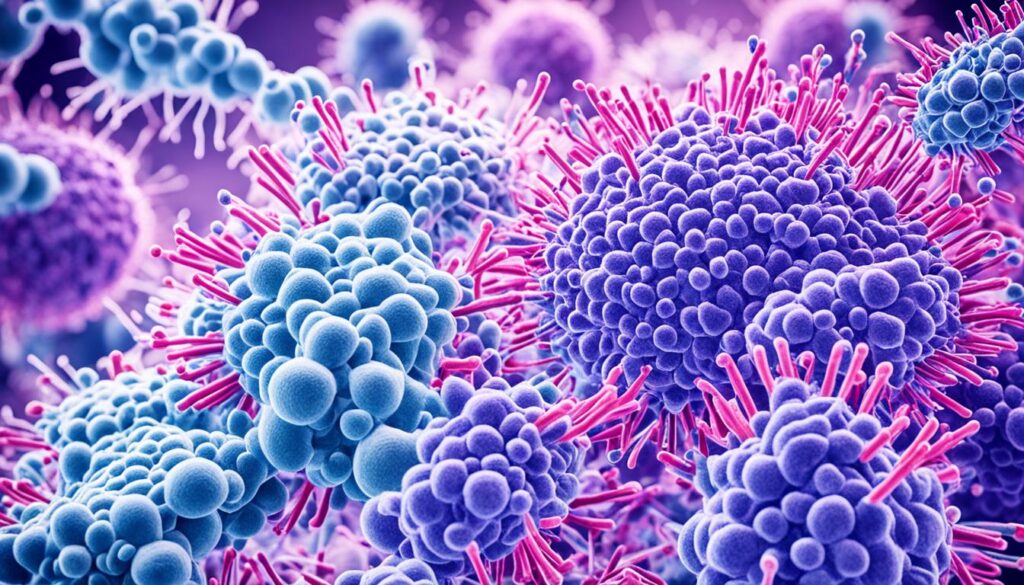
Conclusion
I’ve learned a lot about how estrogen affects breast tissue from this study. It’s key from the start of building mammary glands in the womb to puberty, periods, having babies, and later, menopause. This hormone has a big job in how a woman’s breasts grow and change.
Estrogen helps grow milk ducts and glandular tissue. It also controls how breasts feel and look over time. This makes it very important for how a woman’s body works and her health. Knowing how estrogen helps the breasts grow helps us take care of women better. This is true from when they’re young to later in life.
Estrogen is also linked to certain types of breast cancer. Scientists study how it works with the cancer cell’s receptors. This helps them learn more about breast cancer. And, it helps in finding new ways to keep women’s breasts healthy and fighting breast problems.
